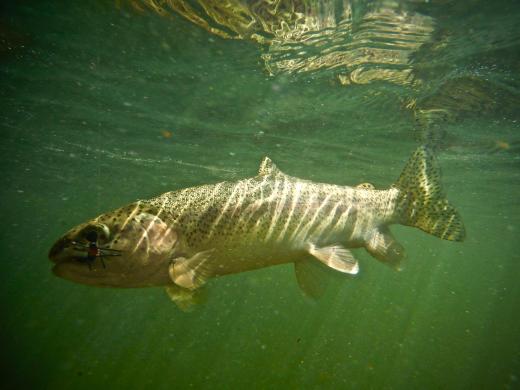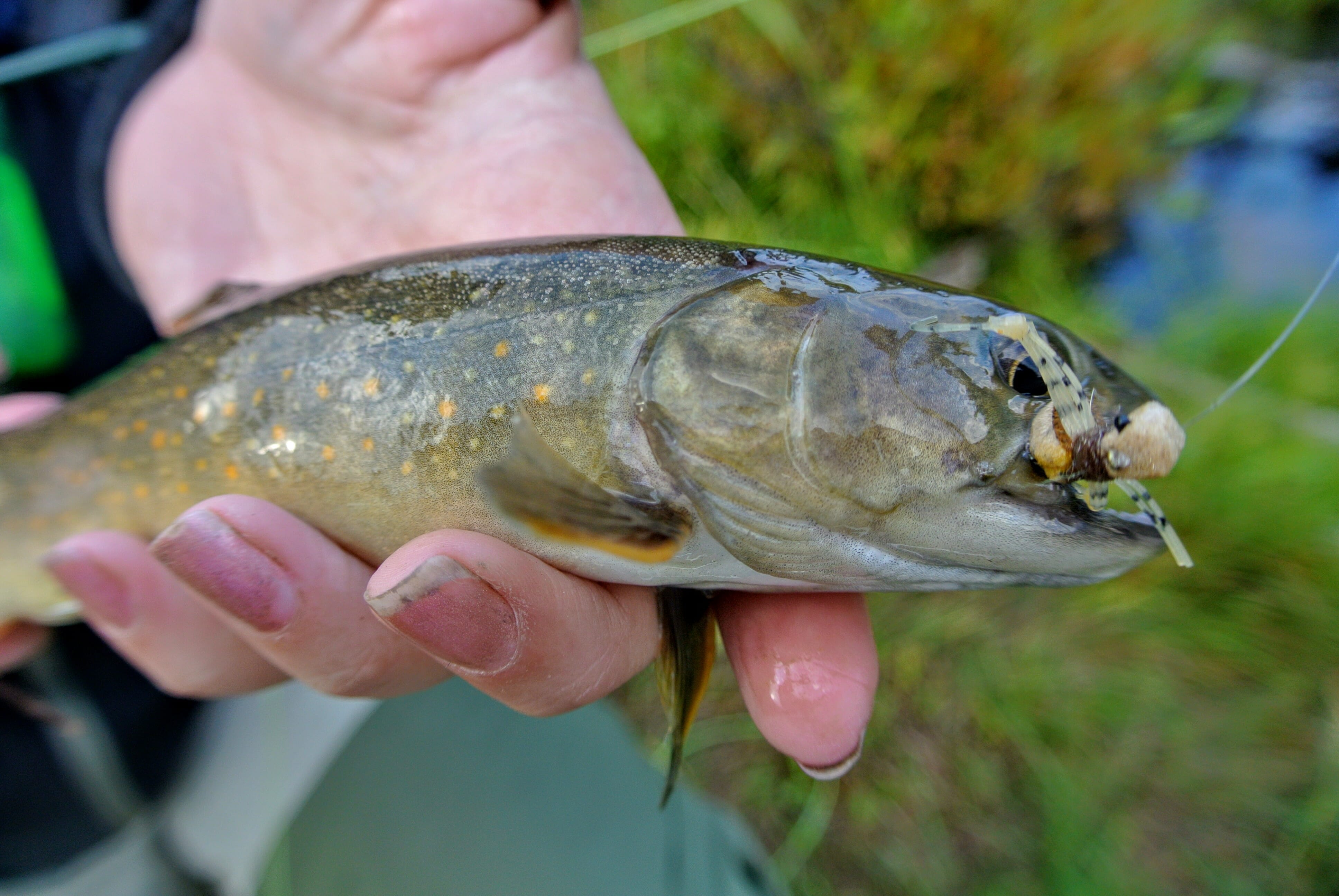Little Lost River bull trout. Photo by the author.
I first fished Idaho’s Little Lost River in the early 2000s. I’d heard rumors of bull trout swimming in the high-desert stream that would hit dry flies intended for rainbows and require two hands for the “hero shot” after the battle.
The latter might be true in some of the river’s lower reaches, and there are bull trout distributed throughout the river, but their origin in this “sinks” stream is a bit … sketchy.
First, an explanation on “sinks.” It’s simple, really. The Little Lost, the Big Lost and a few other streams that flow south out of the Lost River, Beaverhead and southern Bitterrroot mountain ranges literally soak into the Arco Desert northwest of Idaho Falls. This water eventually becomes part of the Snake River Aquifer, which fuels a lot of the springwater activity surging from the basalt cliffs along the Snake River near the community of Hagerman, a good 180 miles away from where the water first filters through the sage and gravel and disappears into the earth.
Above those sinks, though, rivers like the Little Lost surge out of the mountains, sourced by snowpack and high-mountain lakes and springs. The origins of the fish in these waters is, by and large, debatable. Here are the best theories:
-
The bull trout found in the Little Lost are actually native to the river, trapped here by a combination of lava flows to the south (the lava flows that created Craters of the Moon National Monument are only about 2,000 years old) and upwelling to the north. The geologic unrest separated the Little Lost River from the Pahsimeroi River to the north, creating a unique population of the threatened native char.
-
Bull trout found in the Little Lost were transported to the river by early settlers, as they dug canals to irrigate hay and grain crops or simply moved fish from one river to the other using buckets in order to provide an important food source for people living in the area. This is the most likely of the two scenarios, according to Bart Gamett, a fisheries biologist with the Salmon-Challis National Forest, who conducted a thorough study of the drainage in the late 1990s, but there remains some uncertainty, he says.

Little Lost River rainbow trout. Photo by the author.
Either way, bull trout now live in the Little Lost River, along with rainbows, brook trout and the very occasional cutthroat trout. While the origin of the bulls is generally known (if not the exact method of their introduction), the non-native brook trout were certainly stocked, and it’s likely the rainbows were, too, even though there’s an outside chance that at least some of the rainbow genetics could have come from Pahsimeroi River steelhead (the Pahsimeroi is a tributary to the Salmon River, which gets an annual run of steelhead, even today). The rare cutthroat trout in the Little Lost is almost certainly from hatchery origin.
Gamett tells me that it’s possible that the Little Lost, before fish were introduced, was completely fishless, or that mountain whitefish (which were documented in the river in the early 1900s, but not longer appear) were the only native salmonid in the drainage. Today, though, it’s a great wild trout fishery, particularly for rainbows and bull trout.
Bull trout, wherever they appear across their native range in the Northwest are listed as threatened under the Endangered Species Act. It’s not illegal to catch bull trout, but it is illegal to harvest them, and, in many drainages where they are native, it’s not legal to target them.
— Chris Hunt



